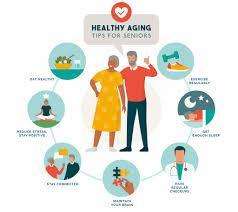Accidents happen, especially at work, if your job puts you in different types of danger. This is why wearing protective gear is crucial and being careful and respecting safety measures in place. As occupational foot injuries are the most common in the workplace, let’s discuss what to expect and how to prevent them.??

Sprains and dislocations
Wet floors, obstacles in the way, carrying a heavy load, and low visibility are some of the reasons to slip, trip, and fall at work. This can lead to dislocating joints and sprained ankles, having you on bed rest for a week or two in the best-case scenario.
Unfortunately, you can’t always affect the state of your workplace, but you can add an extra layer of protection by wearing proper shoes. If you are prone to this type of injury, consult with your physician about wearing preventative ankle braces at work. Generally, wearing semi-deep and deep boots that cover your ankles can keep it stable and fixed, preventing twisting of the joints.
Broken foot bones
One of the most common occupational injuries is breaking bones in your feet, a painful and debilitating condition that may even require surgery. This can happen on construction sites, in factories, storage facilities, and other workplaces that use machinery and heavy loads.
A foot has 26 bones that can easily be crushed, so you need to wear protective shoes during your shifts if you are at risk of this type of injury. You shouldn’t go to work without footwear with steel in the toe area, as well as metatarsal guards. Broken foot bones can keep you at home for a couple of weeks to months, depending on the severity, and even lead to more than one surgery.?
Puncture wounds to the underfoot
Pieces of metal, nails, glass shards or anything else sharp enough can penetrate your shoes and cause puncture wounds to the soles. This type of wound requires immediate medical attention, including tetanus shot, antibiotics, and surgical intervention. If your job is on sites with debris, rubbish, or materials that may present this type of occupational hazard, you can wear PPE and safety shoes with puncture-resistant insoles.
Cuts and tears in skin or flash
Similar to puncture wounds, cuts and tears can also get you to the ER if they are deep and damaging tendons and muscles. Footwear made of cut-resistant material is good protection for those who work with machinery with moving and sharp parts. You can also use proper guarding for machinery you use, like chainsaws, and restrict access only for people with appropriate protective gear.
Heel pain is known as plantar fasciitis
If you walk too much on your job or spend a lot of time on your feet, you may start experiencing pain in your heel or both heels called plantar fasciitis. Since other foot problems can cause similar symptoms, you need to consult experts, like Fairfield podiatry, for diagnosis and treatment. The good news is that physical therapy, corticosteroids, exercises, and resting can be enough to treat the injury, although you will have to change your work behaviour.
If possible, take frequent breaks to rest your feet ? work sitting down and manage your weight. At home, you can do exercises like stretching your calves to loosen the muscles and applying a cold compress on the affected spot for 15 to 20 minutes a few times a day.
Foot burns
Working with hot materials and high temperatures can expose your feet to flammable substances, molten splashes, and fire. These situations can lead to severe burns that may damage tissue and nerves permanently. In these moments, a lot can depend on the quality of your fire-resistant boots.
Moreover, make sure you have enough space to move around with a hot load and keep your distance from the scorching area. Electricity can cause burns too and put you in a life-threatening situation, so electrical hazard footwear should always be on your feet when working in high-voltage situations.
Frostbites of the toes and feet
Whether you are working in a company freezer or below-zero region, you are at the same risk of developing frostbites. In severe cases, extremely cold temperatures can lead to amputation of toes and feet due to permanent tissue damage. Insulated and water-resistant footwear should be the first line of defence combined with warm socks.?
It’s best to take frequent breaks and minimize your exposure to freezing temperatures as much as possible. Being cold is not only bad for your body, but can also decrease productivity and focus on the task at hand, potentially leading to accidents.
Lastly
The risk of some occupational foot injuries is always present, regardless of how many precautions you take. However, the extent of damage can be the lowest possible if you are careful and respect safety measures in place and make sure your employer does the same.

As the editor of the blog, She curate insightful content that sparks curiosity and fosters learning. With a passion for storytelling and a keen eye for detail, she strive to bring diverse perspectives and engaging narratives to readers, ensuring every piece informs, inspires, and enriches.









